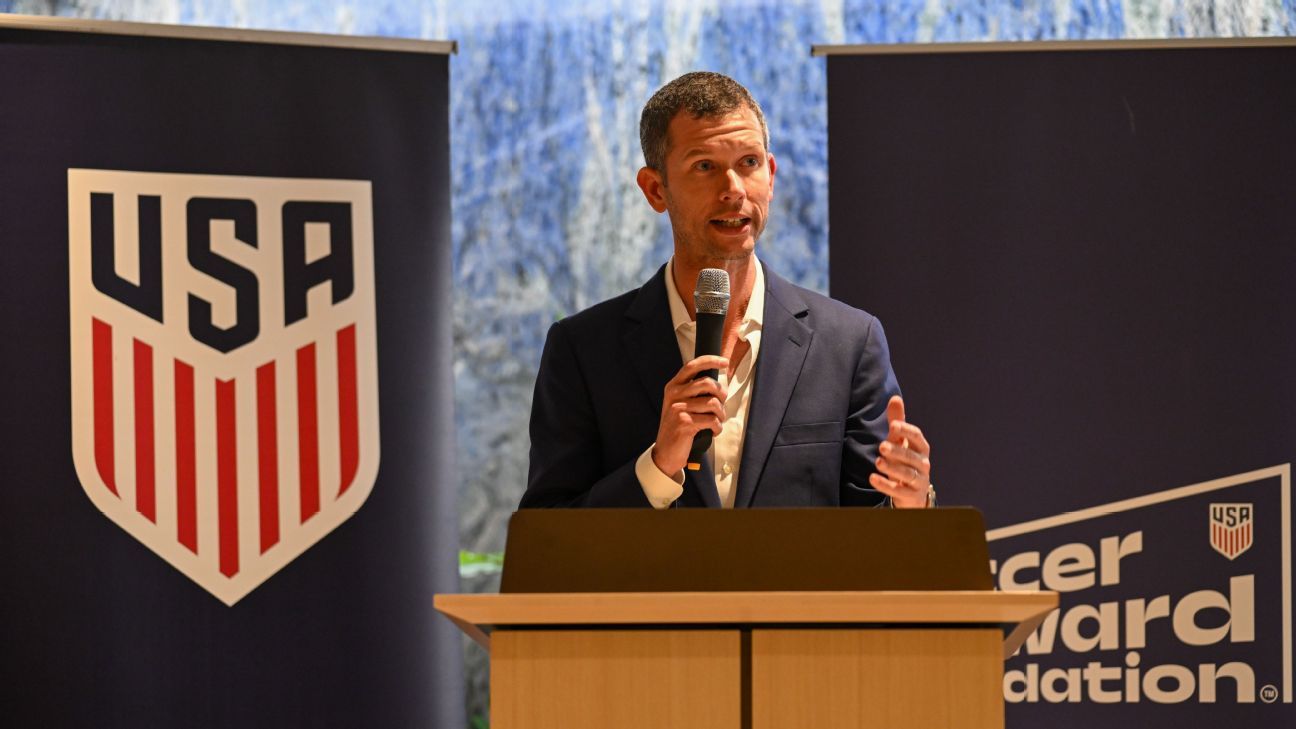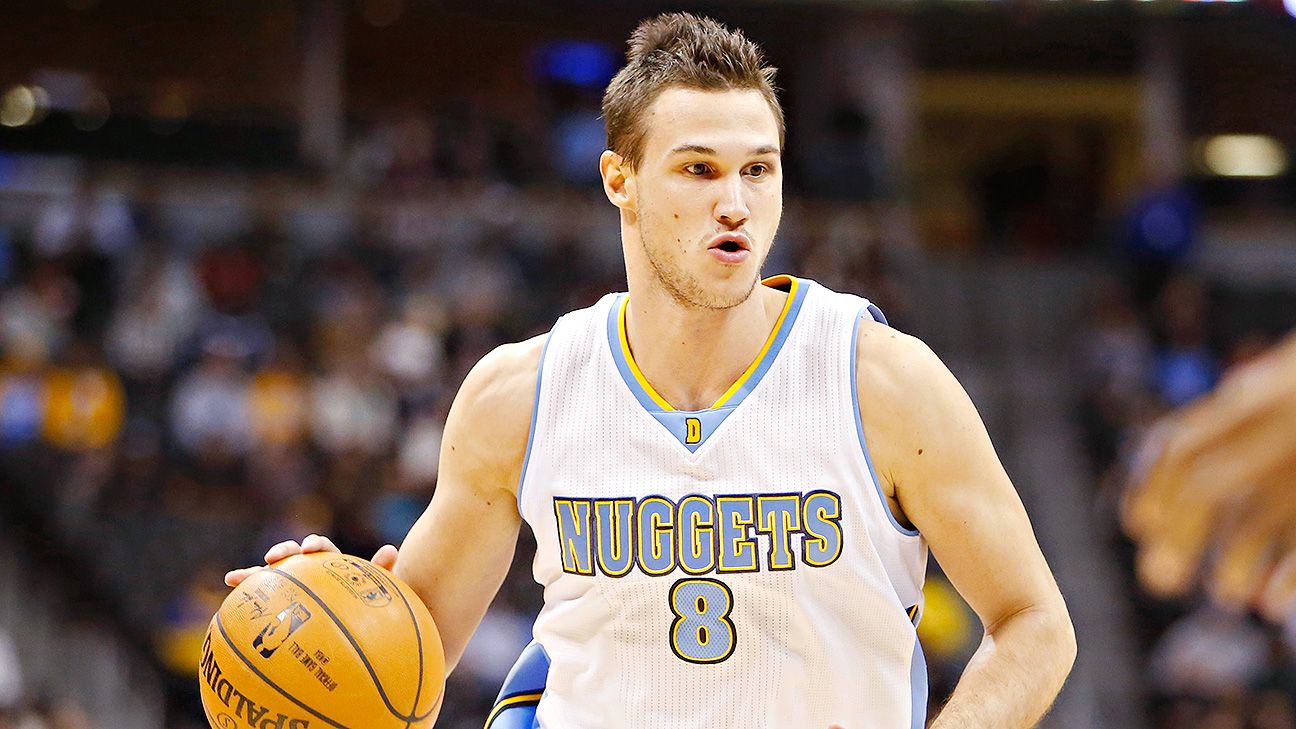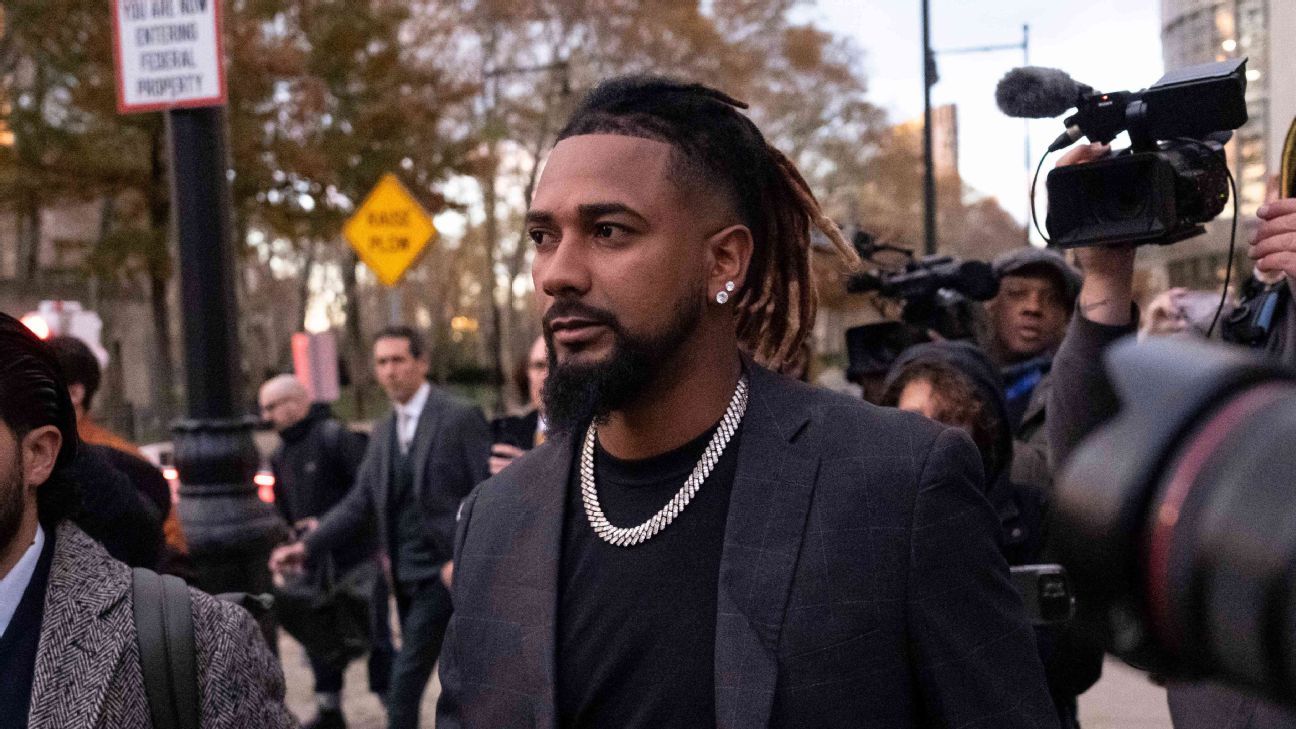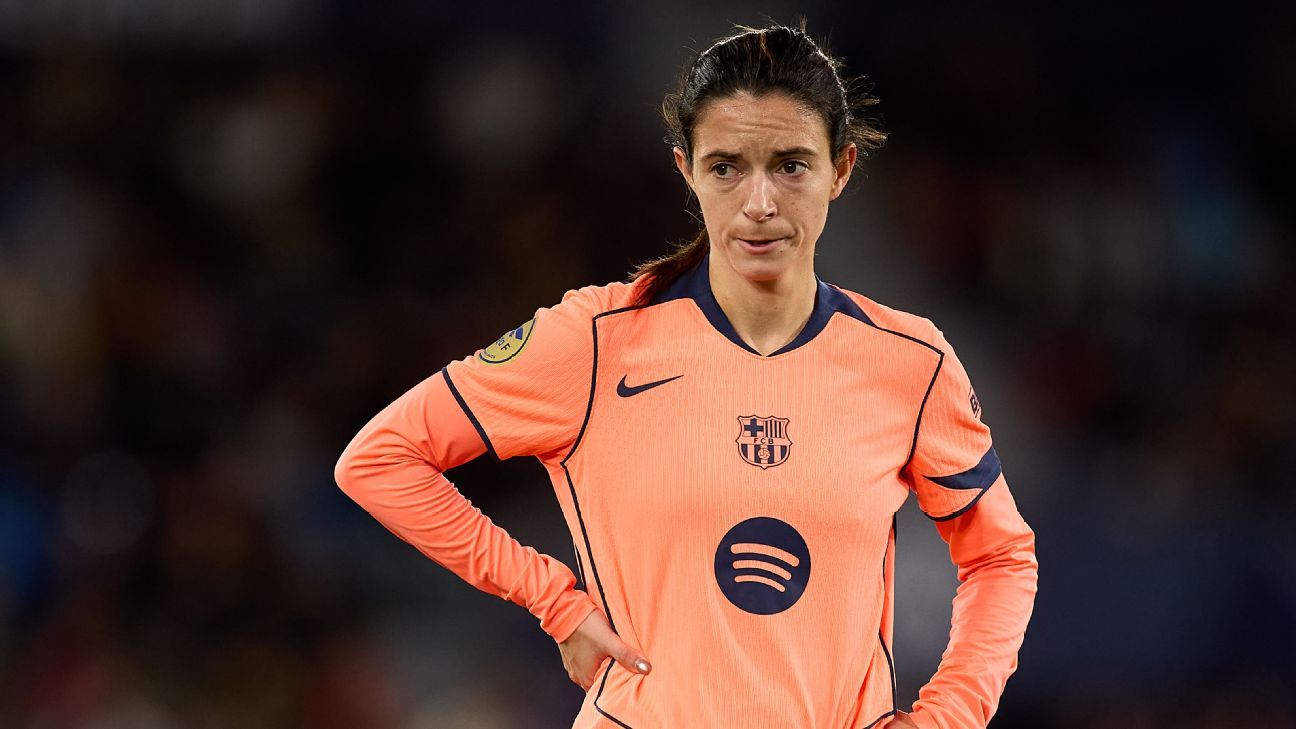Sports
U.S. Soccer recommends extending NCAA season

A committee working on behalf of U.S. Soccer has recommended that men’s college soccer switch to a season that stretches across the full academic year beginning fall 2026.
The recommendation comes after U.S. Soccer tasked the 17-person “NexGen College Soccer Committee” with finding solutions to evolve college soccer to, among other things, better prepare players to turn professional and compete at the international level.
The committee recommended that more time is needed to evaluate the best future construct of women’s college soccer, although the result could be the same recommendation as the men’s game. Regardless of how the college game evolves, the committee said in its report, which was released on Thursday, that it “believes strongly that any of these [four proposed] options are far superior to the status quo.”
Any changes, which still need clear the major hurdle of NCAA approval, would overhaul a college soccer system that has historically served as a development pathway for American pro players — especially women — but has not evolved with the modern professional game. Longstanding issues with college soccer include a truncated season played entirely in the fall, which puts heavy demand on athletes during that time and leaves them largely without competition for most of the year.
“The recommendations were designed to be able to deliver a better student athlete experience, to be able to provide financial stability, and to provide player development opportunities — which are the three things that everyone in college sports said they wanted,” U.S. Soccer CEO and secretary general JT Batson told ESPN. “We’re optimistic for this to be able to move at pace.”
Batson was not part of the committee. Dan Helfrich, principal and former CEO of Deloitte Consulting, chaired the group, which included club and league leaders from MLS, NWSL and USL, as well as athletic directors and a school president, among other stakeholders.
Under the proposal for men’s soccer, all 213 Division 1 men’s programs would still compete for the same championship, but in place of their traditional conferences, they would play regionally and within tiers of similarly competitive teams. Those tiers could change over time in a system similar to promotion and relegation.
Preliminary estimates in the committee’s report say that such a system could save programs $25,000 to $350,000 annually in operational costs depending on their current travel. Many current conferences, driven by college football, have been realigned with disregard for geography, creating cross-country trips for in-conference games.
Helfrich said two major “pain points” for college soccer are the condensed schedules that limit athlete recovery, as well as increasing costs associated with travel and preseason starting prior to convocation of schools.
-How Berhalter revived Chicago Fire after USMNT fired him
-Pochettino’s turnaround has USMNT no longer dreading World Cup
-NWSL U-19 ranking: Thompson, Hutton lead top young players
“The ultimate solution is a response to that,” he said.
The changes would only apply to NCAA Division 1 soccer.
Preseason would begin in mid-to-late August and the regular season would run until April, with a break from games and training in December and January. Games would largely be played on weekends, rather than the current structure of jamming multiple games into each week between August and December.
A championship would be played in May, which Helfrich said would give it a greater platform by not overlapping other college championships. That, too, Helfrich said, would have commercial benefits and give college soccer a greater platform for fan support, media visibility and sponsorship.
This proposed model would be better for everyone in college soccer, Helfrich said, not just the select few who are chasing professional careers.
“The experiences and the implications on all 14,000-15,000 Division 1 American soccer players, versus the hundreds that will or could play professionally, was a dominant part of the committee’s debate,” Helfrich told ESPN. “That was front of mind always: How do we make sure the solutions that we build are thoughtful to both of those constituencies?”
The 17-person committee held mostly virtual meetings every few weeks this year to work on the proposal and analyze four different potential options for college soccer’s evolution. The most conservative option that was analyzed, which could still happen on the women’s side, is a slightly expanded fall season with an added spring competition for elite teams.
Federation president Cindy Parlow Cone, who won three NCAA titles at North Carolina in addition to winning a World Cup and a pair of Olympic gold medals, initially brought the idea to Batson & VP of strategy Emily Cosler to see how the federation could help. Cone had been speaking with University of North Carolina athletic director Bubba Cunningham about the team’s budget and realized how unsustainable it was in the current model. That was Cone’s first “What if?” moment.
The women’s game is unique in several ways, including that it’s much larger at the college level with 350 D-1 programs — and the gap in quality between the national contenders and mid-major schools is much wider.
Batson said it is “a huge red flag” that American women’s players in that college age range (roughly 18-22 years old) are not playing the same number of minutes as their peers in Europe.
Cone and Helfrich both said they hope to have a recommendation in place to implement in women’s college soccer for the 2027-28 academic year.
“There are more challenges on the women’s side, so we feel like we needed to have more discussions, more learnings there, until we put out, ‘this is best for the women’s game,'” Cone told ESPN. “It could be different from the men’s game. It could be exactly the same. But we need to take a look at it, as Emma [Hayes, USWNT coach] likes to say, through the female lens. There’s still more to do there, so we are going to do that work.”
The next challenge in the entire process is the NCAA, which has historically been slow to evolve and included significant bureaucratic red tape, as evidenced with how women’s college basketball had to force structural changes in recent years. There have been major overhauls of late in the NIL (name, image, likeness) era, however, which has left everyone at U.S. Soccer confident that these changes could be implemented quickly. Cone said everyone in the process is “leaning in.”
Helfrich said the next step in the men’s college soccer process should be the committee holding formal conversations with NCAA soccer sub-committees in the coming weeks, and that wider group drafting legislative proposals and timelines before the end of the calendar year. The goal is to have the new system launch next August.
“I will tell you confidently that neither the conferences nor the NCAA will be surprised by this release, because we’ve been collaborative,” Helfrich said. “Part of the reason we’ve done that is to create a smoother on-ramp to governance conversations.”
Among the ideas in the proposal is increased flexibility around player eligibility, which is specifically a pain point in soccer, where players sometimes turn professional as teenagers and sacrifice their college eligibility. The ideas include a “second chance” pathway for players have a stalled professional career, as well as increased opportunities with professional teams without sacrificing college eligibility.
These proposals come at a time when development leagues continue to sprout up in the U.S. MLS Next and multiple tiers of USL already exist on the men’s side, while the NWSL has said it plans to launch a second division in the coming years, in addition to WPSL Pro — which combined would add over 1,000 new professional roster spots on the women’s side.
U.S. Soccer believes these can all co-exist with college soccer — and that the federation’s responsibility is to unite them.
“It’s an example of when you bring all of the parts of the American soccer ecosystem together, you can come up with ways to drive greater impact and greater outcomes,” Batson said. “The American soccer market has grown tremendously over the last couple of decades.
“However, there’s a lot of fragmentation. The role of U.S. Soccer here is one of a convener, an aligner, and ultimately our goal is to catalyze that great energy into the outcomes that everyone cares about. We want soccer everywhere in this country, and we want our teams to win. We are now a soccer country.”
Sports
NBA veteran Gallinari retires from basketball

Longtime NBA forward Danilo Gallinari announced his retirement from basketball Tuesday morning.
Gallinari, 37, spent 16 years in the NBA, playing in 14 seasons — and missing two others with torn ACLs — for several teams, beginning with the New York Knicks, who selected him sixth overall in the 2008 draft.
One of 299 players, per the Elias Sports Bureau, to have played at least 14 NBA seasons, Gallinari also played for the Denver Nuggets, LA Clippers, Oklahoma City Thunder, Atlanta Hawks, Boston Celtics (no games logged), Washington Wizards, Detroit Pistons and Milwaukee Bucks.
The son of Vittorio Gallinari — a teammate and roommate of longtime NBA head coach Mike D’Antoni while the two were members of Olimpia Milano in the 1970s and ’80s — Gallinari is the second-highest-drafted Italian player ever, behind former No. 1 selection Andrea Bargnani, and his 11,607 points is the most of any Italian player in NBA history.
He was best known for his time with the Knicks, where he was the fresh-faced on-court part of their rebuilding project ahead of the star-studded 2010 free agency class while D’Antoni was the head coach, and with the Nuggets, where he arrived as part of the massive trade that brought Carmelo Anthony to New York in 2011.
It was in Denver that Gallinari was part of a 57-win Nuggets team in 2012-13 that was made up of several of the players who came with him as part of that Anthony trade and that appeared ready to make a run in the Western Conference playoffs when Gallinari tore his ACL late in that regular season.
Injuries were, unfortunately, a major storyline of Gallinari’s career, as he missed at least 10 games in all but one of his NBA seasons. He not only missed two entire seasons — 2013-14 and 2022-23 — to ACL tears but also missed the vast majority of his rookie year with a back injury.
But when he was on the court, Gallinari was a tremendously skilled offensive player — particularly given that he was 6-foot-10. His 1,456 3-pointers is the sixth most by any player in NBA history who is at least that tall. In February 2021, while playing with the Hawks, he became one of eight players in league history to hit at least 10 3-pointers while coming off the bench.
That season with Atlanta marked the only time Gallinari would make it as far as the NBA’s conference finals in his 14-year career, although he capped off his professional career by winning the Puerto Rican league title, and winning the championship series MVP award, with Vaqueros de Bayamon this past summer.
Gallinari’s last game in the NBA was Game 6 of the Bucks’ first-round loss to the Indiana Pacers in the 2024 NBA playoffs.
Sports
Clase, Ortiz face May trial in pitch-rigging scandal

NEW YORK — Cleveland Guardians pitchers Emmanuel Clase and Luis Ortiz are facing a May trial on federal charges that they took bribes to help gamblers betting on their pitches.
U.S. District Court Judge Kiyo Matsumoto on Tuesday said jury selection would tentatively begin May 4 in Brooklyn federal court, with the trial opening the following week or sooner.
Assistant U.S. Attorney Sean Sherman told the judge at the brief hearing that prosecutors anticipate the trial could last two weeks.
He said that both sides have been in discussions since the pitchers were arrested last month but that they have not yet talked about a possible plea deal in the case to avoid trial.
Matsumoto initially proposed a February trial date, but prosecutors and defense lawyers pushed for a spring start.
Sherman said prosecutors began providing defense lawyers with evidence and other materials this week in anticipation of a trial, including hundreds of gigabytes of files pulled from a number of electronic devices.
Clase, Ortiz and their lawyers declined to comment outside the courtroom. They’re due back in court Jan. 15.
The two have been out on bail since pleading not guilty last month to wire fraud conspiracy, honest services wire fraud conspiracy, money laundering conspiracy and conspiracy to influence sporting contests by bribery.
According to prosecutors, the two accepted thousands of dollars in bribes to help two unnamed gamblers in their native Dominican Republic win at least $460,000 on bets placed on the speed and outcome of their pitches.
The prosecutors allege that Clase, the Guardians’ star closer, began providing the bettors with information about his pitches in 2023 and then recruited Ortiz into the scheme earlier this year.
Lawyers for the men have denied the charges. Ortiz’s lawyer has maintained that payments between his client and individuals in the Dominican Republic were for legal activities, not payoffs.
Clase, 27, is a three-time All-Star and two-time American League Reliever of the Year who is on the fourth season of a $20 million, five-year contract.
Ortiz, 26, earned a $782,600 salary this year as a starting pitcher for Cleveland.
The two pitchers have been on nondisciplinary paid leave since July, when MLB began investigating what it said was unusually high in-game betting activity when they pitched.
The Guardians open spring training in February. The team’s home opener is April 3.
Sports
Barcelona confirm Bonmatí out for five months after surgery

Barcelona midfielder Aitana Bonmatí will be out for five months after undergoing surgery on a broken leg on Tuesday, the Catalan club have confirmed.
Bonmatí, 27, fractured her fibula in Spain training over the weekend and returned to Barcelona immediately to begin her recovery.
“Bonmatí has undergone successful surgery on a fractured fibula in her left leg,” Barça announced in a short statement on Tuesday.
“The procedure was performed by Dr. Antoni Dalmau at Hospital Barcelona under the supervision of the club’s medical services. The expected recovery time is around five months.”
The three-time Ballon d’Or winner picked up the injury on Sunday as Spain prepared for Tuesday’s UEFA Women’s Nations League final second leg against Germany.
– UWCL talking points: Chelsea’s title chances, PSG’s struggles
– Barcelona in Women’s Champions League: Fixtures, results, news
– Germany’s missed chances open up Nations League final vs. Spain
She had initially wanted to stay with the Spain camp to support the team in their quest to retain the trophy, but was advised to return to Barcelona for treatment.
On Friday, she had played in the first leg in Germany, which ended in a goalless draw.
Bonmatí will now miss the majority of what remains of the club season, although there is a chance she could return for the run in.
The Champions League final, should Barça get there, is scheduled to take place in Oslo on May 22, with the final round of Liga F matches not set to take place until a week later.
The loss of Bonmatí complicates Barça’s options in the middle park, especially in the short-term, with both Patri Guijarro and Kika Nazareth also unlikely to feature again this calendar year due to injuries.
In the meantime, Laia Aleixandri will continue to push up from defence alongside Alexia Putellas, with youngsters Vicky López, Sydney Schertenleib and Clara Serrajordi set to compete for the final place in the middle of the park.
-

 Sports1 week ago
Sports1 week agoWATCH: Ronaldo scores spectacular bicycle kick
-

 Entertainment1 week ago
Entertainment1 week agoWelcome to Derry’ episode 5 delivers shocking twist
-

 Politics1 week ago
Politics1 week agoWashington and Kyiv Stress Any Peace Deal Must Fully Respect Ukraine’s Sovereignty
-

 Business1 week ago
Business1 week agoKey economic data and trends that will shape Rachel Reeves’ Budget
-

 Tech2 days ago
Tech2 days agoGet Your Steps In From Your Home Office With This Walking Pad—On Sale This Week
-

 Politics1 week ago
Politics1 week ago53,000 Sikhs vote in Ottawa Khalistan Referendum amid Carney-Modi trade talks scrutiny
-

 Tech1 week ago
Tech1 week agoWake Up—the Best Black Friday Mattress Sales Are Here
-

 Entertainment2 days ago
Entertainment2 days agoSadie Sink talks about the future of Max in ‘Stranger Things’






